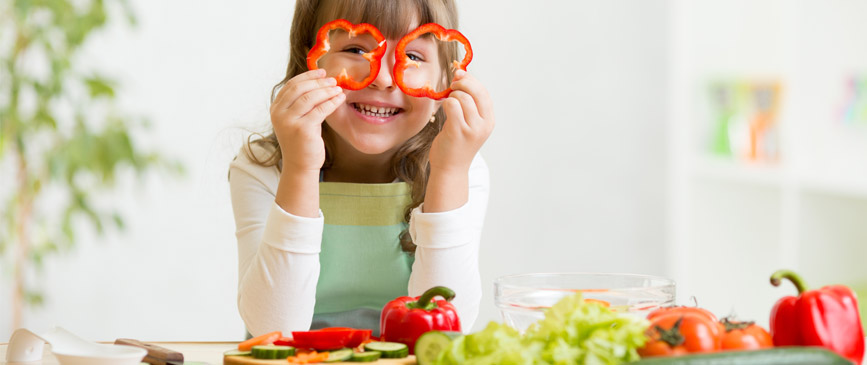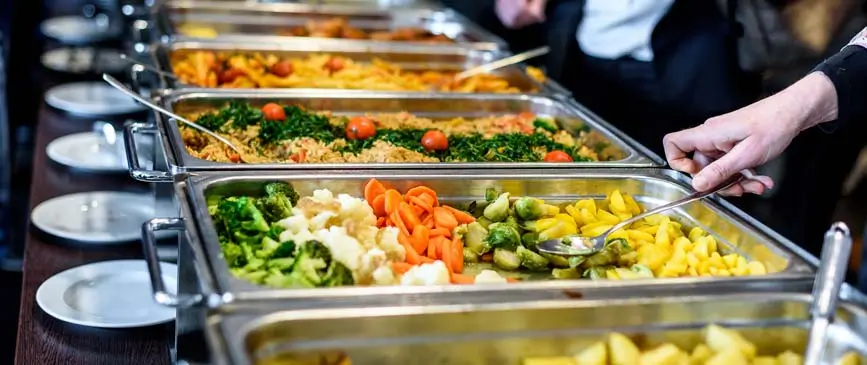Creating a food experience that is personalized to a consumer’s unique tastes and needs plays a essential role in retaining student customers and instilling brand loyalty within them. K-12dining services programs shoulder great responsibility when it comes to “standing out from the crowd” and creating a holistic experience that engages the student customer and ensures a worthwhile experience. With a lot of energy, efforts and resources going into enhancing the aesthetic appeal of the dining space, providing thorough satisfaction and ensuring repeat customers come from more than just that.
The answer lies in the art of personalizing the food experience, by engaging with your student customers and aligning all levels of your team. From the management right down to the front-line staff, attention to detail and personalization goes a long way! Let’s delve deeper into howK-12 dining service programs accomplishes just that:
- Get to know your student customer
Getting to know the people you are serving is crucial in devising the right strategy and plan to achieve desired outcomes. Whether you intend to revamp your K-12 dining space or go about remodeling the existing traditional cafeteria, student-buy in can be a game changer in both scenarios. Know your student’s preferences. What types of food do they want to eat? What AND where are they eating when they are not at school? Capitalize on this attention to detail for creating and implementing successful K-12 dining services programs.
Personal touches by the dining staff (of all levels) is a reflection of your commitment to superior quality services that takes the customer experience to new heights, garnering more support for your food service program! One effective way to do this is to hire highly trained and cordial staff who know how to interact with student customers to make them comfortable. Special professional development training imparts the necessary skills to the people behind your K-12dining services programs. The server at the counter with a pleasing countenance can set the tone for a long-term cordial relationship and lay the foundation for repeat visits by your student customers.
- Involve your student customers in the decision-making process
Student customers are what your K-12 dining services programs should target. They are the most influential resource and need to be incorporated in order to increase participation in school lunch and breakfast programs. One of the most effective ways to move forward with increasing engagement and retention is to propagate the importance of a healthy meal, be it breakfast or lunch. Student buy-in can be totally transformational when done the right way!
Students feel valued when their opinions are taken, considered and implemented upon.Carrying out surveys and focus groups helps you gather live feedback from your student customers. Coupled with taste-testing, you can actually make the entire food experience a highly personalized one. Once the students have a say in how things are done, they will become emotionally involved, yielding more productive results and making your K-12 dining service program a successful one. After all who doesn’t like being valued!
- Establish a K-12 culture representative of your identity
There are many factors that contribute to the overall ambience of a dining space. It is quite essential that K-12 dining service programs make sure conceptualization and branding efforts are synonymous on all platforms. This helps improve brand recall and portrays your service in a positive light. Boring and institutional school cafeterias often deter students. When students have other options, they rarely “choose” to dine in cafeterias that do not appeal to their senses.
Your cafeteria theme and concept is central to creating a unique identity which student customers relate to. It is a way of telling a story about your brand and how it is geared towards serving with excellence. The menu can also be inspired by the theme forging a deeper connection with your brand as a whole.
When we talk about creating an identity that is unique to your K-12 dining services programs alone we also take into account the first impression that is created by the overall look and feel of the cafeteria. Like restaurants, color scheming, spacing, traffic patterns, lighting, seating arrangement, sounds and staff-to-student interaction all matter when creating the perfect ambience for an inviting K-12 dining space.
- Make the whole experience fun-filled
Personalization can be extended to making the experience interactive, engaging and fun-filled.Introducing clubs, team and contests for menu planning can be an exciting way to spice up things. For the secondary level catering to older students, perhaps with a menu design competition would garner the interest of many enthusiasts wanting to try their luck. The best design gets to become the face of the food service program, for that menu cycle.
Induce a feeling of connectivity by knitting together the entire student community and encouraging teamwork through special training and incentives such as rewards and badges. Connect student volunteers to community service (by having them support breakfast programs)so that they are further motivated to help bring about a positive impact, all-in-all nurturing their own unique talents, increasing college/career readiness and channeling energy in the right direction.
You could even periodically incentivize your student customers to return by allowing some of them to win a “lucky” sticker at the bottom of their lunch tray which they can use later as a coupon for a bigger prize, snack or treat. Students inspired by local celebrities can also be capitalized on, as they can be invited as special guest staff/servers to keep students engaged.Students can get signed autographs as well.
- Leverage the power of social media
With a conspicuous online presence, you can create awareness around your brand. Social media platforms like Facebook, Instagram and Twitter have the power to showcase your product’s or service’s unique features and get all relevant audiences (both internal and external stakeholders) to interact with your service offerings and create highly fulfilling dining experiences. By forging a connection with the audience online you can set realistic expectations and then fulfill them in your K-12 dining space, making them come back for more.
Creative, visually appealing, appetizing and colorful food posts will not only create awareness about your K-12 dining service programs but also create ripples of impressions across all platforms. It’s likened to a public opportunity to convey to your student customer, parents and community that you truly care for student interests and their feedback and opinion is always welcome. Group pictures of your team, to include cashiers, servers/front-line and “back of the house” staff interacting with the students (for various occasions and reasons) can also bring a humanized feel to your social identity, getting more and more student customers to engage with you on a personal level.
While food quality, customer service and aesthetic appeal constitute the basic ingredients of a successful dining experience, every K-12 dining services program (and even college foodservice companies) should go an extra mile to create impressions that are unique and memorable so that your operation indefinitely creates loyal student customers.



